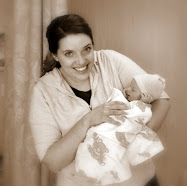By ELENA CHERNEY | Staff Reporter of THE WALL STREET JOURNAL
It's one of civilization's most vexing problems: How to get a crying baby to fall asleep.
Some of the nation's leading sleep authorities are softening their long-held positions. In a coming new edition of his landmark 1985 book, pediatrician Richard Ferber is backing off his controversial system for training babies to sleep. The approach, which involves leaving a child to cry for progressively longer intervals until he or she falls asleep, has many ardent followers. But the crying method has also drawn loud criticism as being neglectful.
Dr. Ferber now says that letting children cry "was not meant to be the way to treat all sleep problems" and his updated book, coming this spring, will make it clear that he offers other solutions besides crying.
The Sleep Landscape
Take a look at some views on infants sleep.
At the same time, pediatrician William Sears, the most prominent opponent of the Ferber method, is relaxing his so-called attachment parenting approach that dictates, among other things, that parents respond to their children on demand, day or night. Dr. Sears has long advised parents to sleep with their children and to view nighttime as a chance to do more parenting -- say, by sitting up with them if they protest bedtime. But in his new book published last month, "The Baby Sleep Book," Dr. Sears tells parents that they, too, need to get some rest. For example, he suggests that if the mother is sleep-deprived, it may be time to wean the baby off nighttime feedings.
These shifts are among the latest in a flurry of new guidance that seems aimed at offering practical solutions for parents -- neither too harsh nor too permissive. Last month, the American Academy of Pediatrics issued a series of pronouncements on sleep strategies, from a task force convened to combat sudden infant death syndrome. Among the suggestions: Parents should try using a pacifier to soothe infants to sleep -- despite concerns artificial nipples may interfere with breast feeding. The group recommended for the first time against the increasingly popular practice of babies sharing their parents' beds, after concluding that it is associated with a higher risk of SIDS. But they said the crib should be in the parents' room, so as to remain close.
There is certainly no clear magic bullet yet to get children to sleep, and the efficacy of any approach will vary from family to family. But many parenting experts say this new round of advice represents a welcome break in a debate that had become increasingly caustic, with experts and their followers often hurling public criticisms at one another.
Much of the argument has played out on Internet message boards, where the tone has gotten so intense that one Web site, ivillage.com, banned discussion of different approaches from its sleep-training forum. "We don't want people to feel attacked," says Tamara Amey, an ivillage forum moderator.
The quest by busy, affluent parents to get a good night's sleep has spawned a huge advice industry in recent years, with experts touting books, videos and private sleep-consulting services. Products to help babies to sleep are a booming business: A Toys "R" Us Inc. spokeswoman says new offerings arrive all the time. Popular items at the store now range from fleece swaddling blankets with Velcro fasteners to remote-controlled crib mobiles.
A host of book authors have found success mining a middle ground between the two poles traditionally represented by Drs. Ferber and Sears. Pediatrician Marc Weissbluth, whose "Healthy Sleep Habits, Happy Child" sold 500,000 copies and has just been reprinted in hardcover with a new introduction, emphasizes frequent naps and putting the child down drowsy but awake. And last May, Elizabeth Pantley published a sleep book focused on toddlers and preschoolers, as a follow-up to her 2000 "No Cry Sleep Solution" for infants. Dr. Sears wrote a foreword to her first sleep book, but Ms. Pantley says she advises gradual bedtime routines as a middle ground between the "nighttime neglect" of the Ferber method, and the demands on parental sleep that come with Dr. Sears's method.
There are still plenty of points on which the experts disagree -- particularly when it comes to babies sharing their parents' beds. Despite the AAP's recommendation against so-called co-sleeping, many experts continue to recommend it. Co-sleeping is central to the attachment parenting approach touted by Dr. Sears and others. Even Dr. Ferber, who had been opposed to the practice, now says that sharing a bed can be effective for families.
Already some sleep experts are challenging the AAP's recommendation. Judith Owens, the director of the Pediatric Sleep Clinic at Hasbro Children's Hospital in Providence, R.I., says co-sleeping has been shown to be safe in other parts of the world where almost all babies sleep with their parents. In her own book published last month, "Take Charge of Your Child's Sleep," Dr. Owens says that bed-sharing is a safe alternative for families.
Dr. Ferber, 61, says that he has been largely misunderstood. When he first published his book in 1985, "there weren't any others," he says. The book, which has been reprinted 45 times, contains advice on a range of sleep issues, from bed-wetting to teens who can't get up for school on time. But he is most known for his signature controlled-crying method, which involves leaving a baby alone in the crib to cry for progressively longer intervals until he or she falls asleep. Parents are instructed to go into the room at the end of each interval to console -- but not touch or pick up -- the child.
Dr. Ferber, who is also director of the Center for Pediatric Sleep Disorders at Children's Hospital in Boston, says that now, "we've had a lot more experience. There really are a lot of different ways" for children to learn good sleep habits.
Dr. Ferber says that he will be revising his book because some parts need to be updated. For instance, he says new research suggests that babies don't need as much sleep as he originally advised. And he wants to clarify that his crying technique was targeted at a specific problem: the child who can fall asleep only while being rocked or held. While he still presents this approach in his new edition, he says he tells parents they can use gradual steps to wean a child off of rocking and soothing behaviors. And he clarifies that some children such as those suffering from anxiety will not be helped by the crying method.
Krista Rushing, a mother of a 2-year-old boy in West Monroe, La., has not been a fan of Dr. Ferber's classic method, and says she always goes to her son when he wakes in the night. "It's a good thing" Dr. Ferber is revising his book, she says.
Dr. Sears, whose new book is one of several written with his wife Martha, had long disparaged Dr. Ferber's method -- often called "Ferberizing." The Searses tell parents that such methods are appropriate for training pets, not raising children.
In softening his own approach, Dr. Sears says he now thinks his earlier books placed too much emphasis on catering to the baby's needs, and did not address the parents' needs enough. "It's also a parent-centered approach," he says of his new book. "What your baby needs is a happy, rested mother."



No comments:
Post a Comment